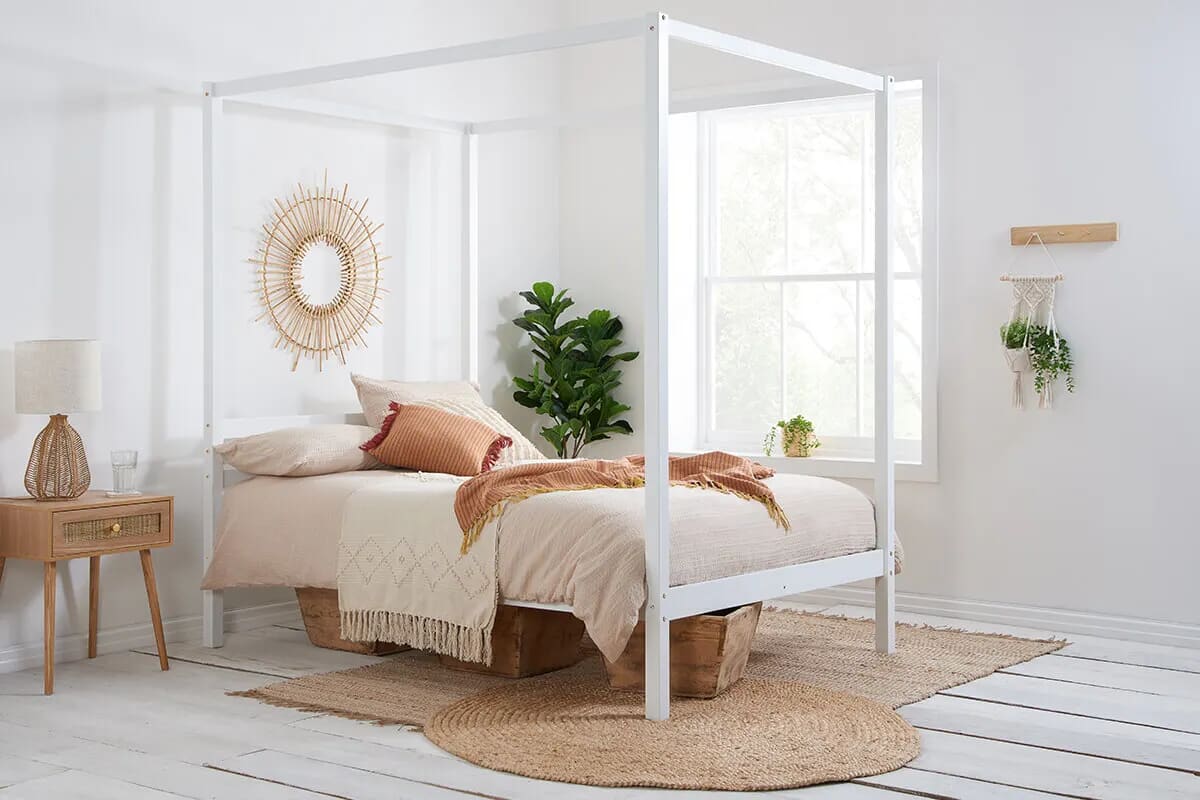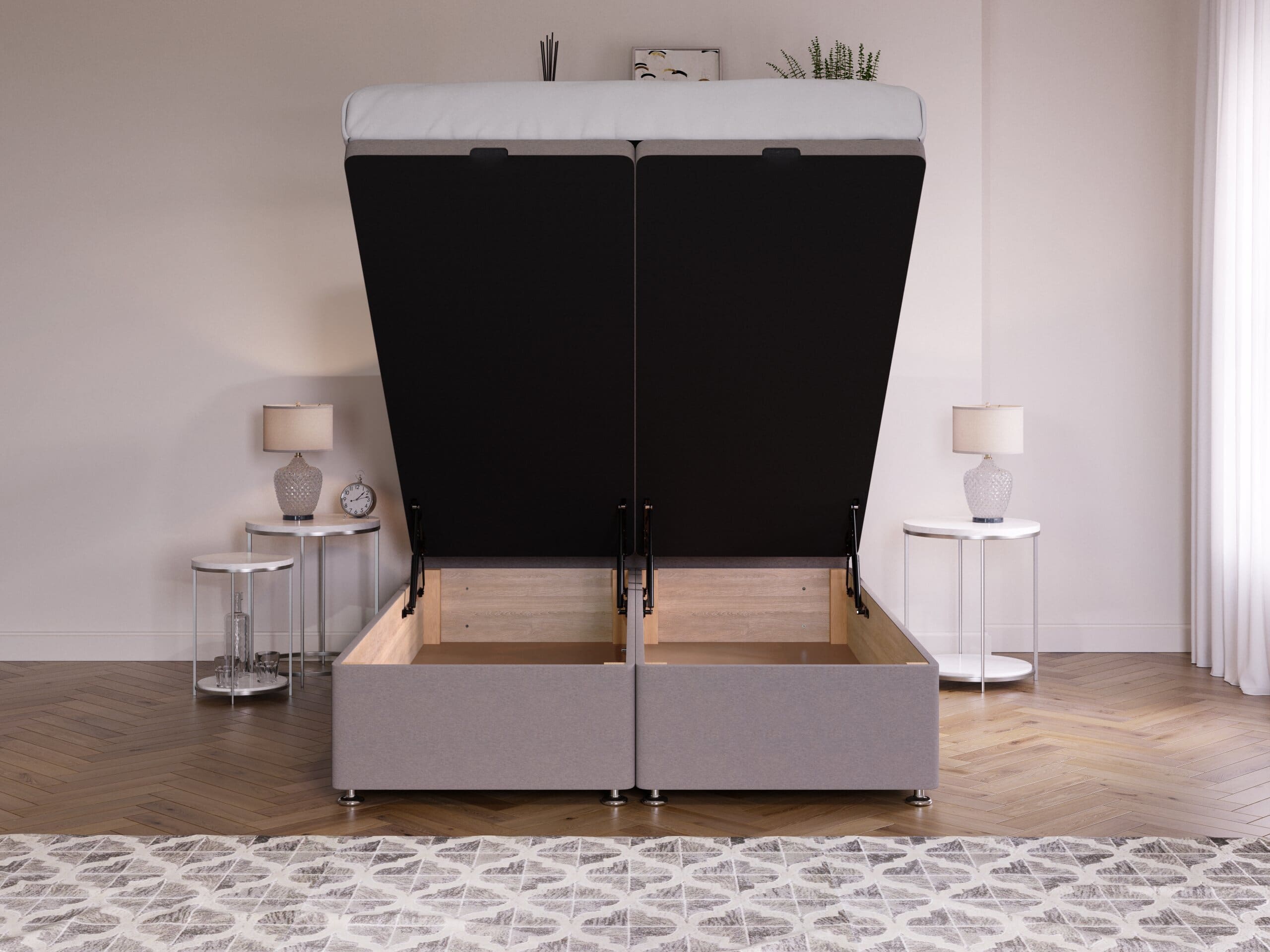Bed Buying Guide: How To Buy A New Bed
Everything you need to know about buying a new bed frame.
When buying a new bed, most of us tend to pay more attention to the mattress. However, your sleeping surface is only part of the equation. Even the most luxurious mattress money can buy isn’t going to give you a good night’s sleep if it’s sat on top of an inadequate bedstead. In fact, your bed frame impacts more than just your comfort - it can entirely change the style and aesthetic of your bedroom.
How often should you buy a new bed?
Ideally, you should replace your bed frame every ten years to ensure you’re getting the best sleep possible, but it’s more common for people to update their bedstead every 15-20 years.
Updating your mattress is a much more frequent task, and you should be replacing your mattress every seven years according to the Better Sleep Council. However, if you have taken very good care of your mattress and you feel that it is still working at optimum efficiency, then you can keep your mattress for as long as you like.
Your mattress and your bed might be one of the first things you consider updating if you find that you’re struggling to get to sleep at night or you frequently find yourself with a lot of discomfort after sleeping on it.
Things to consider when buying a bed
Choosing the right bed frame can be just as important as choosing the right mattress. Let’s look at the top seven factors you ought to take into account if you’re asking yourself ‘How do I buy a new bed frame?’.
- Set your budget. Before you go anywhere near a showroom or online store, have a good idea of the amount you want to spend, and buy the best bed frame possible within those parameters. Getting it right the first time can help your mattress achieve its intended lifespan and ensure you get night after night of comfortable and supported sleep.
- Size is important! If you’re hanging onto your existing mattress, make sure you measure it up. If you’re buying a new one, then ensure that the bed frame you choose is designed to accommodate its dimensions. On our website, you’ll find all the necessary measurements when you choose the right frame. You also need to be sure that there’s enough room in your bedroom for your new purchase. For help finding the right bed size for you, read our Ultimate UK Bed & Mattress Size Guide.
- Pick your style. This is the fun bit. You’ll find bed frames available in all colours, shapes, and sizes, allowing you to put your stamp on your surroundings. If your home leans towards the rustic side, a wooden bedstead might be what you’re looking for. For clean lines, metal bedsteads might be better.
- Hard or soft? Solid-top frames offer firmer support than their sprung-slatted cousins, which instead offer more flexbility. Deciding what is the most comfortable bed frame will depend very much on your sleeping requirements. If you have back problems, something firmer will help keep everything properly aligned. Side-sleepers, however, might prefer the more forgiving support offered by slats.
- Storage. If space is a premium in your home, divans are a superb solution. With built-in drawers, you can keep anything from clothes to those homeless knick-knacks safely stowed away. You can even go for an ottoman lift bed, which uses pistons to help you lift your mattress and the top of the bed up to reveal maximum under-bed storage space.
- Elevation. This is important, as raising your bed off the floor keeps the underside of the mattress exposed to the air and prevents the build-up of moisture. Also, buying a new bed frame that’s the correct height allows you to get in and out without too much fuss. However, if you’re pushed for space, that under-the-bed area can be used for storage.
- Weight. Perhaps most important of all, a good bed frame needs to be able to support the weight of the mattress and anyone who happens to be sleeping on it. As mattress-manufacturing technology evolves, many mattresses are using heavier, denser materials in their fillings and support systems, which requires a bed frame that’s up to the job. Once you've picked your bed, you can read our guide to the best mattresses for heavy people if this applies to you.
What is the difference between a bedstead and a bedframe?
One of the things that can confuse anyone buying a new bed frame is the terminology. You’ll frequently hear the words ‘bed frame’ and ‘bedstead’ being used, and we use them interchangeably. Unless you’re an expert (like us!), this can be a little bewildering. The good news is that they both refer to the same thing. The base, construction, or platform that your mattress sits on top of can be called both a bed frame or a bedstead.
What is the difference between a divan and a bedstead?
Although divans and bedsteads both support and elevate your mattress, there are some key differences between the two. A bedstead is essentially a frame on which your mattress rests. Typically, they use wooden slats as the support system. This offers a gentler form of support beneath the mattress, as the wood can expand and contract according to weight and temperature. Bedsteads are available in a variety of styles, materials, and colours, allowing you to add that personal touch to your surroundings.
Divans, on the other hand, are essentially mattress-sized boxes, with the mattress sitting neatly on top. Because the top of the divan is solid, these offer firmer support, with less room for bending and bowing. This bed type tends to be favoured by those who prefer a minimalist, modern and fuss-free style, but they can be customised to suit your own personal preference by choosing different upholstery and colour options. Our Premium Divan Bed, for example, is available in a range of design options, like Linen Teal or Plush Velvet.
However, the main difference between a divan and a bed frame is how they use the space beneath the mattress. Your usual bedstead will have room underneath for storage boxes and clutter you want to keep out of sight - just check the clearance space when looking at the dimensions. However, piling stuff up under your bed can make it difficult to access and keep in order. Divan beds have drawers built into the box frame. These allow you to optimise your spare space by keeping it organised.
Types of bed frames
If you’ve been anywhere near an online store or a showroom, you’ll know that there are bed frame styles to suit virtually any kind of home and décor. From pocket-sprung ottomans and velvet-upholstered divans to bunk beds and traditional bedsteads, the choice seems almost endless. You can choose something homely and rustic, something sleek and contemporary or something bright and friendly. However, the question that most people ask is: is metal or wood frame better?
Wooden frames
Wooden bed frames tend to be the choice for those who favour its timeless appeal. Whether you live in something small and cottagey or a spacious period home, wood suits both rustic and classic backdrops. Wooden frames are fabulously robust and will withstand the occasional bout of children bouncing on them, quite cheerfully.
Colour-wise, the selection is more limited, as good wood needs to be shown off, rather than hidden beneath a layer of paint - but painted wooden bed frames are available. In addition, there’s the weight to consider. A good wooden bed frame will have solid wood components, and these can be heavy once put together. Combined with a mattress, this could cause problems for homes with floors not built for that kind of weight. If you’re buying a wooden frame, you might also want to consider whether the raw materials have been sustainably sourced.
Metal frames
Metal frames, by comparison, are much lighter. They are available in a kaleidoscope of colours, from dark, minimalist tones, to vivid and vibrant colours, perfect for kids’ bedrooms. While they can be just as robust as their wooden counterparts, they might not withstand a game of ‘trampolines’ quite so cheerfully. However, metal bed frames are far easier to clean and maintain than wooden ones: a quick wipe and the job’s done.
By their very nature, metal frames use metal pieces and fixings in construction. As they age, these metal-on-metal parts can become worn which, in turn, can give rise to a squeaky bed. The other thing to watch out for is the quality of the metal used. Poor-quality metal tends to rust which, if left untreated, can eat away at the frame’s structural integrity. When buying a bed frame, it’s always worth asking about the quality of the materials involved.
Leather and fabric beds
Leather and fabric upholstered beds are popular choices for people who want to add a touch more character to their bedroom. This type of bed frame usually features a metal or wooden structure, which then has a fabric or leather covering, including crushed velvet or suede.
Upholstered beds come in a range of different styles and designs, making them the best bed for creating a particular aesthetic in your bedroom. It's important you look after the fabric of your upholstered bed properly, to avoid tears or staining that will reduce the longevity of the bed. And don't worry if you're animal-conscious, there are plenty of faux leather beds available that don't harm animals, or come with a hefty price tag.
How to choose a bed frame size
The size of the bed frame that you buy will depend on two factors: do you already have a mattress that needs to fit underneath, and how much space do you have in your bedroom?
If you already own a mattress that you want to fit on top of your new bedstead, you’ll need to take the measurements of your mattress and use this to compare bed frames. Most UK bed frames will be advertised as having the same measurements as their mattress counterparts. For example, a UK double mattress is 135 x 190cm, and so is a double bed frame. So, if you know you want a 'double' size bed, then just look for that measurement when buying both components. If you already have a king size mattress, then shop for a king size bed frame, and vice versa!
If you need to check which bed or mattress size you already have, or what size bed you want, then read our Ultimate UK Bed & Mattress Size Guide for help in understanding the different sizes available.
You will also want to check that you have enough space in your bedroom for your chosen bed frame – it’s generally recommended that you have at least 24 inches or 60 cm of walking space on either side of your bed frame and at the bottom of it. This ensures that you have enough room to walk around it.
Will my bed frame affect how firm my mattress will be?
The short answer is ‘yes.’ A traditional bed frame is lined with supporting slats. These allow air to circulate the underside of the mattress and will gently bend under the weight put on them. Bedsteads with slats are better for side sleepers and those who don’t want too much resistance against pressure points, such as the shoulders, hips and lower back.
In contrast, ottomans and divans use a solid top to support the mattress. By their very nature, these offer firmer support and are well-suited to those who need to keep their spines in alignment. In this case, putting a firm mattress on top of a divan or ottoman bed frame is going to give the best results.













